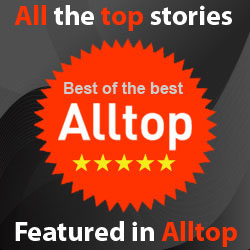By Kristus Ratliff , event and conference manager & blogger at “Hotel Food Chatterbox”
Nearly a month ago, someone saw my LinkedIn page and contacted me to request a phone interview for the Operations Manager position at his company. I agreed to the phone interview and two weeks later, accepted the position. The job and company were everything I’d been dreaming of: more responsibility, a promotion, and working in the private industry. However, the job opening was never posted online, never listed on job sites like Monster.com or in the Washington Post classifieds.
While digesting all that’s happened in what has seemed to be a whirl-wind of events, it’s become apparent that had I not taken the time to invest in my own career advancement a year ago — by creating a blog and LinkedIn profile — I would have missed this great opportunity.
In this “soft” job market and troubled economy, employers are swamped with job applications and resumes. Back in 2002, when I worked in human resources briefly, we’d got more than 300 resumes for a single job opening. As part of the vetted process, I was essentially directed to “scan” the first 50 resumes for certain skill-sets or educational backgrounds. Those that made the cut — only a select few– were passed on to managers for their review. Frankly, we just didn’t have the man power to read them all. I can only imagine the deluge of resumes swamping HR managers’ desks now that we are nose-diving into a double-digit unemployment rate.
You may be happy in your current role, but one day you will be ready to move on or an unexpected turn in your industry could leave you unemployed. Taking the time to establish a professional identity that is separate from your employer is key to successful career advancement in today’s job market.
I learned about the importance of establishing a professional identity while attending a course related to 21st century job searching using social media networks. It was taught by Dawn Penfold of Meetingjobs.com and Jim Spellos of Meeting-U.com. At the time, I wasn’t actually ready to leave my job, but I wanted to be ready when the urge settled. Dawn and Jim persuaded me to rethink my career advancement strategy and consider the possibility that I would not find my next job if I relied solely on job posting websites.
After the course, I must say I was reluctant to follow their advice, but eventually set up a professional blog and a LinkedIn page. My blog, Hotel Food Chatterbox, is all about hotel food and beverage trends and tips. The blog quickly became a creative outlet that also helped establish me as a subject matter expert about something I’m passionate about: food. To increase traffic to my blog and increase my exposure online, I cross promoted my blog using my LinkedIn profile and also posted discussion topics online for more exposure online.
Here are some tips that you can use to establish your own professional identity.
1) Google yourself and remove any harmful information about yourself online. Memberships to music sites like iMeem, Amazon.com wish lists (they are public unless you customize your privacy settings) and Facebook/Myspace pages can contain harmful or embarrassing information about you. Lock your social networking pages down and restrict access to specific people or groups. Never post anything online that is private. Assume that once you post something online, it is in the public domain.
For young people and recent college grads: don’t assume that photos of you playing beer pong or doing shots of tequila will never surface online! Living a double life in the age of camera phones is risky and much more difficult to manage than you may anticipate.
2) Establish a professional online presence. When an employer or colleague searches your name, the first information that appears should be professional, not personal. If the first thing that comes up is your Facebook account, you may not be harming yourself professional; however, you probably aren’t helping yourself either. Sites like LinkedIn and Twitter can help you create a brand identity consistent with what you’ve communicated in your resume.
3) Merge your creative interests with your professional identity. Quirky interests and hidden talents help to differentiate you from your professional competitors. In many cases, employers have more qualified candidates than jobs to offer, you have to find a way to stand out from the pack. Use what makes you, “you” to get noticed. I use my blog to demonstrate competence in my profession, highlight my knowledge and share my unique humor and personality.
4) Cross promote yourself. If you have a blog or photo journal and a LinkedIn account, cross promote them with one another to boost hits to each site.
5) Become an expert. If you have expertise in a particular area, contribute to online message boards and LinkedIn group discussions. Every time you contribute, you are telling every person that reads your response that you are a subject matter expert in your field. Also, by contributing online, you’re increasing the volume of information online related your professional identity.
About the Guest Blogger
Kristus is an event and conference manager with over five years experience in the Trade Association and Non Profit industries. She is currently a member of the Potomac Chapter of MPI (PMPI) and the Melrose Hotel Advisory Board.
A contributor to the Potomac Memo (PMPI’s monthly newsletter), she is an avid writer with a strong interest in public relations, food and beverage trends and special event design. You can read her candid food and travel writing at Hotel Food Chatterbox (http://hfchatterbox.blogspot.com).









Pingback: 2011: Year of the Unstuck | Year In Review | The Career Pioneer
Pingback: Tweets that mention Social Profile to the Rescue: How I Used Linked In to Land a New Gig | The Career Pioneer -- Topsy.com